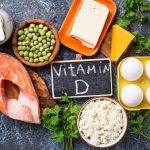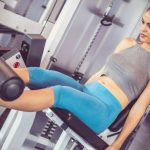Varicose veins are perceived by most people primarily as an aesthetic problem. But the unattractive-looking rough veins in the legs are more than just an aesthetic defect.
Untreated varicose veins can cause several health complications . They can even lead to a dangerous disease called thrombosis. And this is literally about life.
In this article, we will look at how varicose veins arise, what their symptoms are, but also what helps the varicose veins.
What are varicose veins and how do they arise?
Varicose veins, technically called varicose veins, are dilated veins that occur most often on the superficial veins of the legs.
It is the lower limbs that are most exposed to orthostatic pressure. Whether they have to endure long sessions or standing for a long time, the fact is that neither benefits them.
In technical language, varicose vein are defined as chronic venous insufficiency or even chronic venous insufficiency.
They are caused by the weakening of the walls of blood vessels and veins, as a result of which blood accumulates in the veins. They most often affect the legs, due to the difficulty of returning blood from the legs back to the body.
Blood returning to the heart must also overcome the earth’s gravity, it can accumulate and cause the pressure in the veins to rise. During such a long-term action, the walls of the blood vessels are damaged and various folds, dictions, but also protrusions of the veins to the skin surface appear, which is already visible to the naked eye.
Causes of varicose veins
The formation of varicose vein is mostly related to impaired function of the valves located in the blood vessels . The valves as such help in the flow of blood from the legs to the body.
In addition to the valves, the muscles in the legs, which act as a pump, also help blood flow. When sitting or standing for a long time, this pump may not work enough, making it difficult for the blood to flow out in the blood vessels, increasing the pressure in the veins.
The main reasons for varicose veins include:
- impaired or impaired valve function,
- insufficient function of the venous pump,
- chronic venous hypertension,
- peripheral venous emptying disorder.
Risk factors for varicose veins
Risk factors determining the incidence of varicose vein can be divided into two groups, namely the n eovplyvniteľné and influenced . Let’s look at the uncontrollable ones first.
Uncontrollable factors of varicose veins formation:
- hereditary predisposition,
- female gender,
- pregnancy , especially recurrent
- higher height,
- overcome thrombosis.
Influenceable varicose veins:
- lack of exercise , long sitting, but also standing,
- smoking,
- obesity and overweight,
- hormonal treatment , contraceptive use.
Beginning varicose veins: How do you recognize them?
Do you suspect that something is wrong with your legs? Do you have a constant feeling of heavy legs, my legs are tingling, you have cramps in your calves or swelling and pain?
In all probability, these may be incipient varicose vein. Therefore, if you experience any of the above symptoms, or a combination of several, do not delay your visit to the doctor.
How do varicose veins hurt? Symptoms of varicose veins
The pain in the varicose vein is really unpleasant. It is usually a dull pain that increases even more with prolonged standing. However, walking can help, because it increases the work of the muscle pump and at the same time improves the outflow of blood from the legs to the body.
In addition to walking, raising the legs to a raised position is also a very effective way to relieve varicose vein pain .
What other symptoms can be observed with venous disease?
- Leg pain (often worsening in hot weather), muscle and vein pain
- Increasing pain when sitting or standing for a long time
- Itching and burning in the veins
- Alternation of feelings of heat and cold
- Changes in the veins, creating the so-called whip veins
- Swollen feet
- Convex, visible varicose vein
- Change in pigmentation, changes in the skin of the forelegs
What is good for varicose veins? Treatment of varicose veins
The treatment of varicose vein is a long-term process, which depends primarily on the stage of the disease and on its symptoms and difficulties.
Supporting blood circulation is a general basis for the treatment of varicose veins, regardless of their stage.
These may be conservative practices that include good lifestyle, pharmacotherapy (drug therapy) and compression therapy (intended to redistribute blood in the legs).
Radical procedures such as surgical removal of varicose vein, laser ablation or sclerotherapy can also be applied. However, we will not deal with radical treatment in this article, as it belongs exclusively to experts.
Compression stockings for the treatment of varicose veins
The most popular way to treat varicose vein is quality compression , which does not require surgery. It creates sufficient pressure on the walls of the deep as well as superficial veins of the legs, which prevents blood retention. In this step, the blood is also directed towards the heart.
Compression is most often performed with the help of special compression stockings. These are available in several classes, depending on the development of varicose veins. Currently, you will find a number of models on the market, which are enriched with various excipients, such as menthol or silver ions, thanks to which they have a cooling or disinfecting effect.
The best way to get to compression stockings is to see a doctor, a specialist who will determine the appropriate type of stockings and then write a prescription.
Compression stockings can be obtained without a prescription, but in this case it is necessary to count on the payment of the full price.
Treatment of varicose vein with drugs
Another way of treating varicose veins is to administer drugs such as venopharmaceuticals or even venotonics or venoprotectants – these drugs are used to treat venous diseases.
They affect the venous and lymphatic system, thanks to which their use leads to a reduction in swelling and pain.
There are also various over-the-counter preparations for varicose veins that work on a natural basis. Most of the offer is a variety of ointments, creams, cooling gels, herbal teas and spas.
Varicose vein home treatment
Home treatment can also help you get milder stages of varicose veins. Try one of the following tips.
Horse chestnut for varicose veins
Horse chestnut contains the substance aescin, which is excellent in the home treatment of varicose vein. For example, you can make ointment from chestnut at home.
Grate fresh seeds (if you have them dry, crush them) and then mix with melted pork. Boil for a while and set aside in a dark place for about 15 days. During this time, however, the ointment is boiled three more times (after 5 days).
You can also try horse chestnut tincture. Prepare it by infusing sliced chestnut fruit in 40% white alcohol. The leaching should take about 3 weeks.
Mustard oil for varicose veins
You can use mustard oil as a foot massage oil. It relieves pain, stimulates blood circulation and has very good anti-inflammatory properties.
Varicose vein and apple cider vinegar
Another option for home treatment of varicose vein is the application of apple cider vinegar to the affected areas. Apple cider vinegar will improve blood flow and also help reduce swelling.
Essential oils
The essential oils you use as a wrap can also help with varicose veins. Chamomile, lavender or carrot oil, for example, is very suitable for this purpose.
Healthy food
Dietary treatment can also help you significantly with the treatment of varicose vein. Try including the following foods in your diet:
Ginger – improves blood circulation.
Onions, leeks, garlic – contain a lot of vitamin C, which has a positive effect on the venous system.
Pineapple – has anti-inflammatory effects, which makes it beneficial in the treatment of varicose vein.
Grapefruits, blueberries, raspberries – consuming this fruit will strengthen the capillary walls, for more efficient blood flow.
Varicose vein exercises
In the case of varicose veins, proper movement plays an extremely important role. It can act preventively, helps prevent the development of varicose vein, but also relieves pain and discomfort.
Low-load exercises for varicose veins
Experts in varicose veins recommend low-strength exercise. Simple lunges forward are very effective. Stand upright and keep your feet apart. Step forward and bend the knee, which you place directly over the ankle and hold for a few seconds. Return to the original position and repeat the exercise with the other leg.
Also try an unobtrusive exercise that you can practice virtually anywhere. Stand up straight, slowly lift your toes and come back again. Repeat the exercise several times.
Lifting your legs, whether sitting or standing, can also be helpful.
Cycling at the varicose veins
You can also train your calf muscles, which also get really good when you get varicose veins.
A walk
Treat yourself to a walk lasting at least half an hour every day to help relieve the unpleasant pain. Keep in mind that walking is much better than standing or sitting when the varicose vein are sick.
Varicose vein in pregnancy: Symptoms, treatment, elimination
Varicose veins are a relatively common, albeit unpleasant, accompanying symptom of pregnancy. Of course, they may not apply to every pregnant woman. Here, too, genetic predispositions come into play , such as age, weight, nature of employment, but also the number of pregnancies.
Why do varicose veins arise during pregnancy?
There is no doubt that pregnancy is a huge burden on a woman’s body. Within a few weeks, a huge number of changes take place in the future mother’s body, which usually does not go unanswered.
It is the varicose vein that arise as a result of increased blood flow. The volume of blood circulating in the body increases significantly, resulting in an increase in venous pressure, especially in the more advanced stages of pregnancy.
Swelling of the ankles appears, which in themselves do not yet pose a serious problem. However, if a woman is predisposed to have varicose veins, swelling can be a sign of this unpleasant disease.
The formation of varicose vein during pregnancy can also be influenced by the ever-increasing weight and growing abdomen , which, for example, can “constrict” the blood vessels through which the blood travels from the legs back to the heart. In combination with poor condition of the veins or valves, this condition can lead to varicose veins during pregnancy.
Varicose veins in pregnancy and their symptoms
The symptoms of varicose veins in pregnancy are the same as in varicose veins in a woman who is not pregnant or in a man. The first symptoms are therefore the feeling of heavy legs, pain, swelling, itching, burning and gradually visible protruding veins on the skin.
Treatment and removal of varicose veins during pregnancy
Varicose veins during pregnancy do not have to be a serious problem, especially if they did not appear until during pregnancy and the future mother had never suffered from them before. In such cases, the varicose vein tend to resonate shortly after birth.
However, sometimes there is a risk of blood clots forming in the varicose vein, especially in pregnant women , which can be a dangerous condition. Therefore, if you have varicose veins during your pregnancy, it is definitely not harmful to your gynecologist or doctor who will assess your condition.
The treatment of varicose vein during pregnancy usually consists of wearing compression stockings and regimen measures such as regular exercise, a healthy diet and avoiding prolonged standing or sitting.
To alleviate the unpleasant accompanying symptoms of varicose veins, you can try natural help, such as various gels or ointments.
Finally Say
The treatment of varicose veins is important not only for appearance, but above all for health. Untreated varicose vein can cause a variety of health problems and lead to disability.
Keep this in mind whenever you decide to postpone their treatment for a while.
Also Read : Why Do Not I Lose Weight And Lose Weight? What’s Wrong




